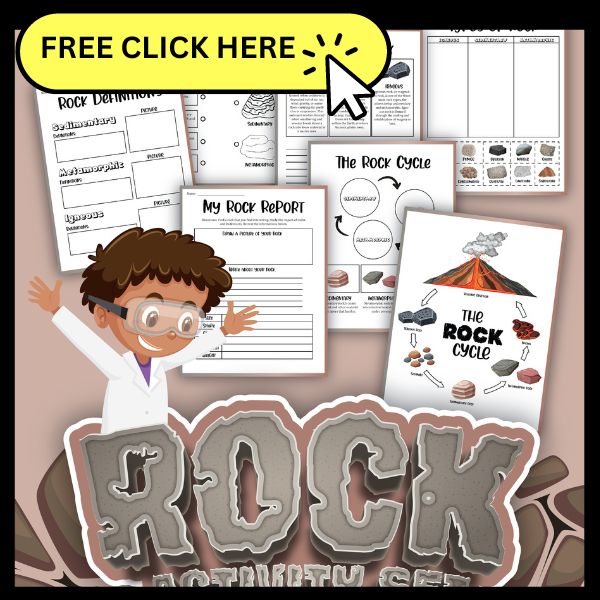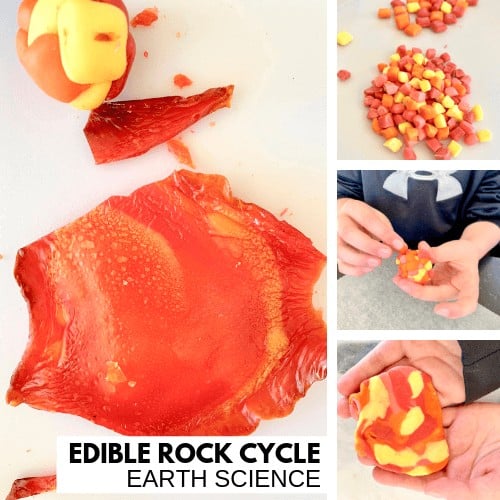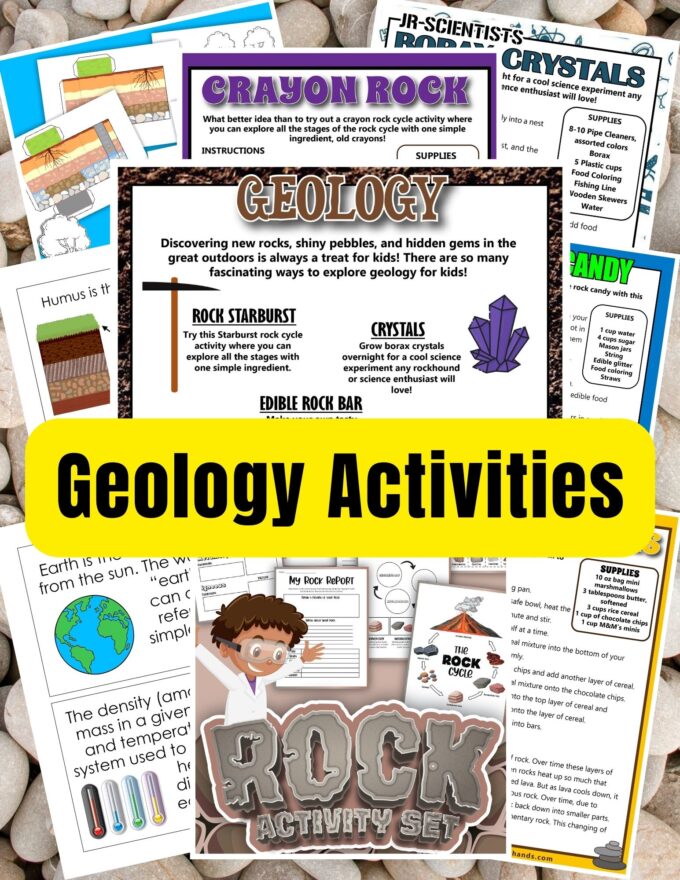Here is a really fun and easy way to create a rock cycle model. Try out this crayon rock cycle lab where you can explore all the stages of the rock cycle with one simple ingredient, crayons! Plus, make sure to look out for the free printable How Do Rocks Form pack! Easy hands-on geology activities for kids are the best!
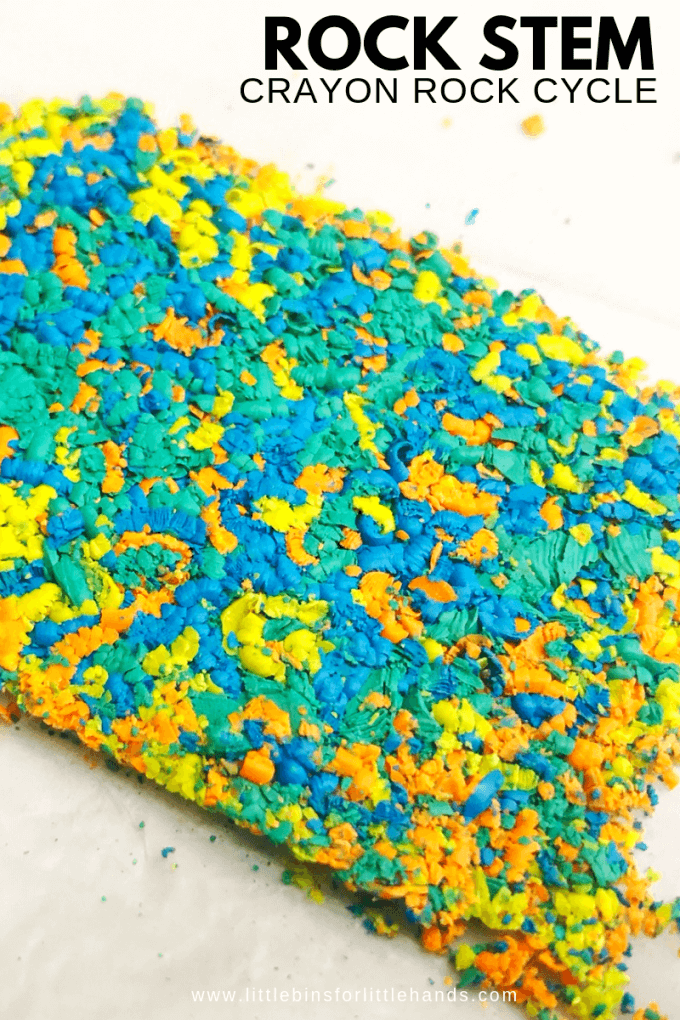
Make A Rock Cycle Model With Crayons
Transform an old container of crayons into a model of the rock cycle. Kids will have a blast exploring all the stages, and they can even color with their new rock crayons if you make a few!
Add this simple rock activity with just one ingredient to your geology science or STEM lesson plans this season. Let’s dig in if you want to learn more about the rock cycle. While you’re at it, make sure to check out these other rock cycle models.
Rock Cycle Models
- Starburst Rock Cycle
- Edible Sedimentary Rock
- Free Rock Cycle Activity Pack
- How Do Sedimentary Rocks Form?
Get Your Free Printable How Do Rocks Form Pack
Crayon Rock Cycle Lab
Let’s get right to exploring the rock cycle in action with crayons. Grab some old crayons (new ones work too) and get them unwrapped. We have some grating to do to make the sediment!
TIP: Not sure to do with your crayon pieces at the end? Check out how to melt crayons to make new ones!
Supplies:
- Crayons
- Cheese grater
- Pen/pencil
- Wax paper
- Aluminum foil
- Paper
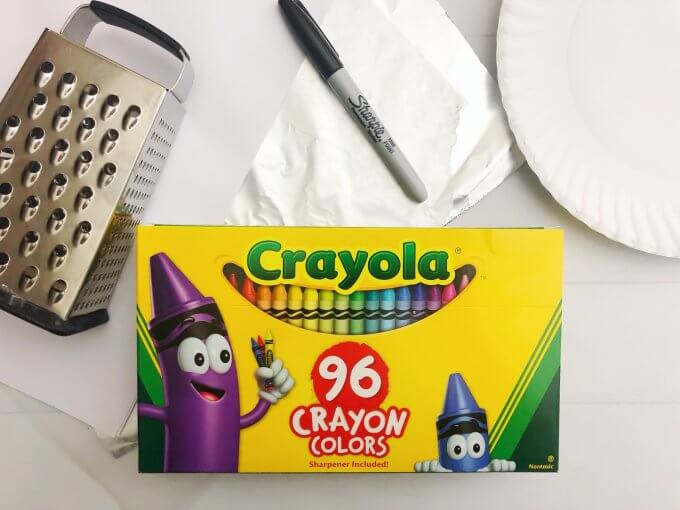
How To Make Rock Cycle With Crayons
Let’s get learning with easy geology kids will love!
If you do not have access to an oven for this activity, you can still enjoy the other stages of the rock cycle and simply make a prediction of what will happen when the heat is added to the crayons.
SAFETY NOTES: Please supervise kids when sharp tools like graters are being used. Additionally, a heat source such as an oven is needed for the final step of the rock cycle project, so adult supervision is recommended.
STEP 1. Peel the paper off four crayons and draw three columns on a piece of paper.
The crayons unwrapped are like Igneous rocks. Label your first column and write down a few words that describe what the crayon feels and looks like.
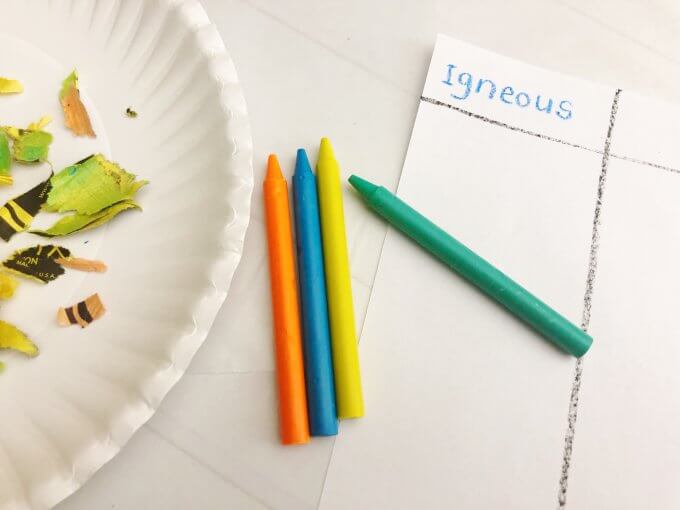
STEP 3. Use a cheese grater to grate the crayons into a pile on a piece of wax paper. Grated crayons are similar to Sedimentary rocks.
Label your second column and describe what these crayons feel and look like.
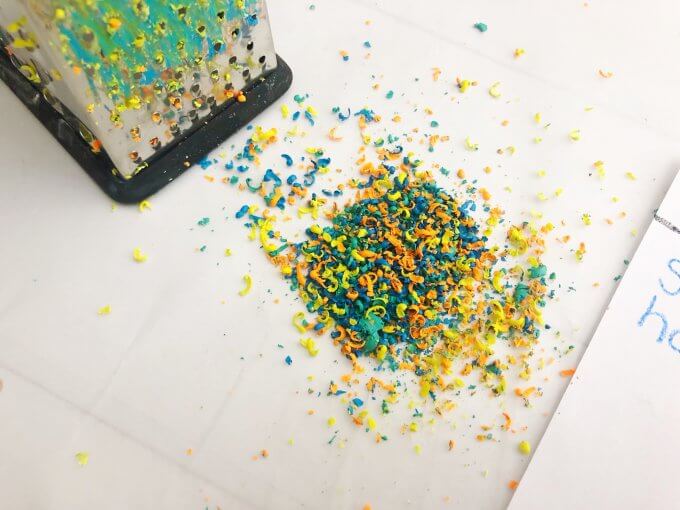
STEP 4. Keep your grater crayons in a pile and fold the wax paper over the top. Apply pressure with the palm of your hand to squish the crayon together.
The pressure and heat will form the grated crayons into what is similar to a Metamorphic Rock.
Use the third column to label and describe how these crayons look and feel.
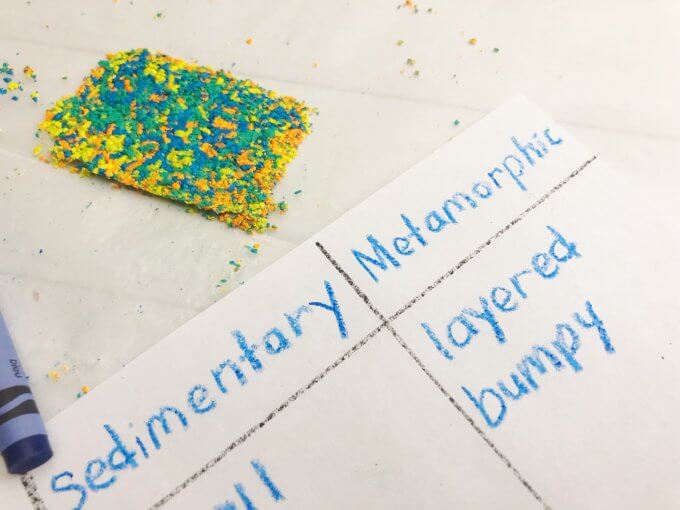
STEP 5. Tightly form a piece of aluminum foil into a little cup and place the Metamorphic Rock inside.
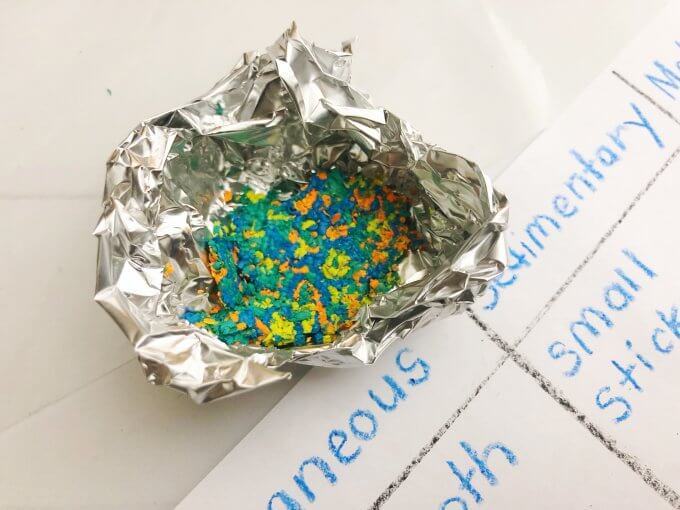
STEP 6. Let an adult put the crayon in a preheated 250-degree oven for 5 minutes for the “Metamorphic Rock” to melt and form into a new shape.
Let cool and then remove from the aluminum foil.
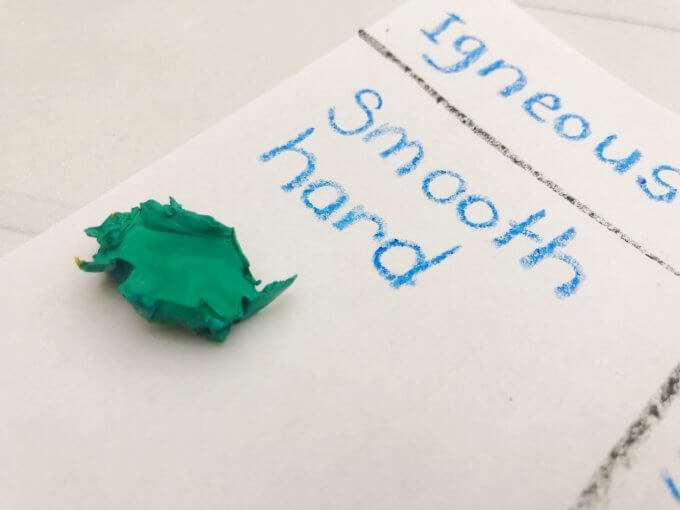
What Is The Rock Cycle?
The rock cycle is the process by which rocks of one kind change into rocks of another kind.
There are three main kinds of rocks: igneous rock, metamorphic rock, and sedimentary rock.
Each of these rocks can change into other rocks by processes such as cooling, melting, heat, weathering, and erosion, compacting (squeezing tightly together), cementing, and pressure. This change in rock forms is called the Rock Cycle.
Let’s learn more about each type of rock!
Types Of Rock
Sedimentary Rock
Sedimentary rocks are formed from pre-existing rocks that have been broken down into tiny particles. When these particles settle together and harden, they form sedimentary rocks.
Sedimentary rocks can often have a layered appearance. This is the most common rock type found at the Earth’s surface.
Common sedimentary rocks:
- sandstone
- coal
- limestone
- shale
Metamorphic Rock
Metamorphic rocks started out as some other type of rock, but have been changed from their original form by heat, pressure, or a combination of these factors.
Common metamorphic rocks:
- marble
- granulite
- soapstone
Igneous Rock
Igneous rock forms when hot, molten rock crystallizes and solidifies. The melt originates deep within the earth near active plates or hot spots, then rises toward the surface, like magma, or lava. When it cools, igneous rock is formed.
There are two types of igneous rock. Intrusive igneous rocks crystallize deep below the Earth’s surface, and the slow cooling there allows large crystals to form.
Extrusive igneous rocks erupt onto the surface, cooling quickly to form small crystals.
Common igneous rocks:
- basalt
- pumice
- granite
- obsidian
Read on to find out how to model these different types of rocks with crayons.
Alternative Rock Cycle
This rock cycle activity could also be done with bits of modeling clay to explore the sedimentary and metamorphic phases if an oven is not available. You cannot heat the clay but it still gives you an idea of the process.
YOU MAY ALSO LIKE: Starburst Candy Rock Cycle
More Fun Earth Science Activities
When you finish this rock cycle activity, why not explore more earth science with one of these ideas below. You can find all our geology activities for kids here!
Why not grow sugar crystals or make edible geodes!
Explore the layers of soil with simple LEGO bricks and with an edible soil layers model.
See tectonic plates in action with this hands-on project.
Grab some colored sand and glue for this fun layers of the earth activity.
Learn all about volcanos with these volcano facts, and even make your own volcano.
Learn about how fossils are formed.
Make a paper Earth layers model.
Printable Geology Pack
Kids love rocks, and this 100+ page Geology Pack is a fantastic way to encourage their passion for exploring, learning, and collecting!
WHAT’S INCLUDED:
- 8+ Hands-On Learning Activities exploring crystals, rocks, and volcanos
- Additional mini-packs include materials to learn about soil layers, layers of the earth, and the rock cycle!
- Extras include vocabulary words, fun games, and projects.
- Be a Collector Pack: start a rock collection like a geologist
- 3 Dioramas: Build 3 models including rock cycle, soil layers, and layers of the earth


